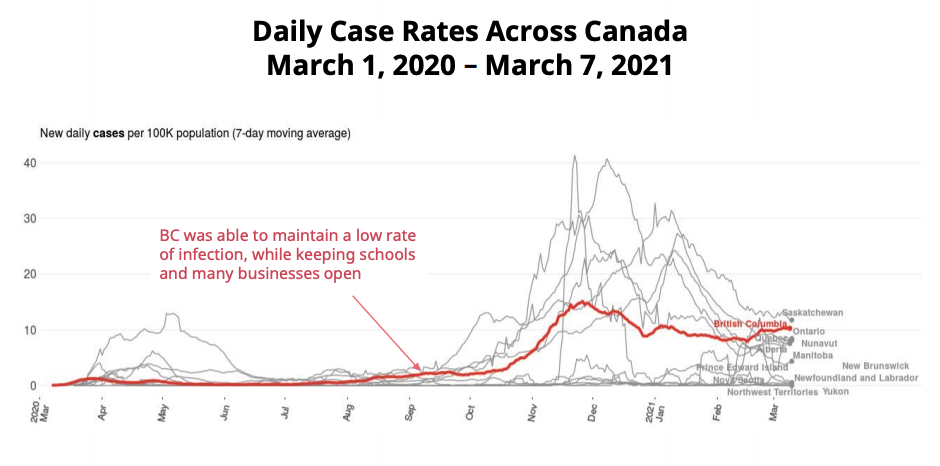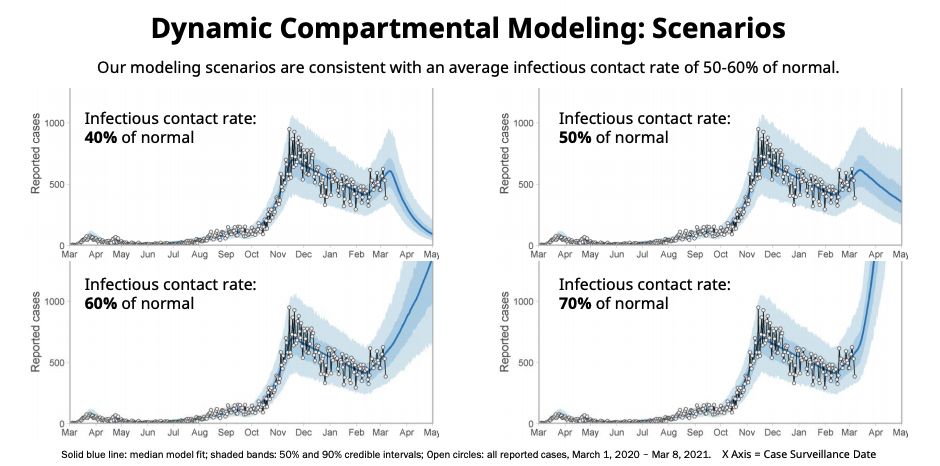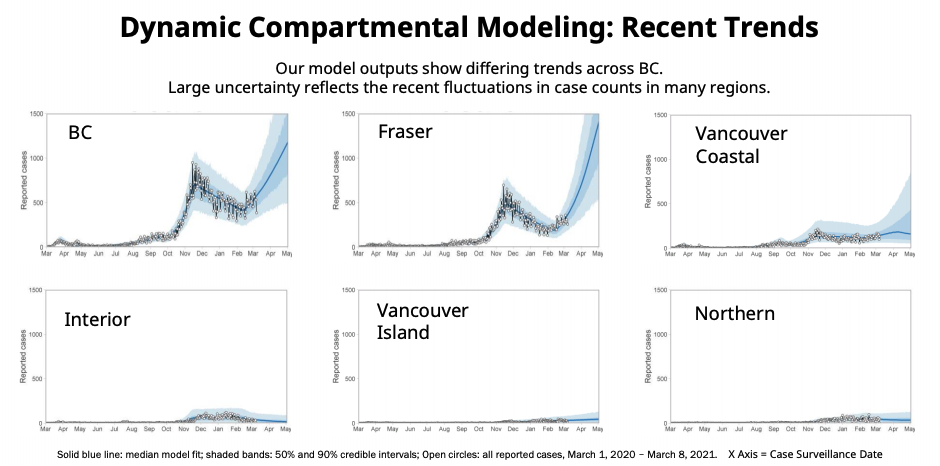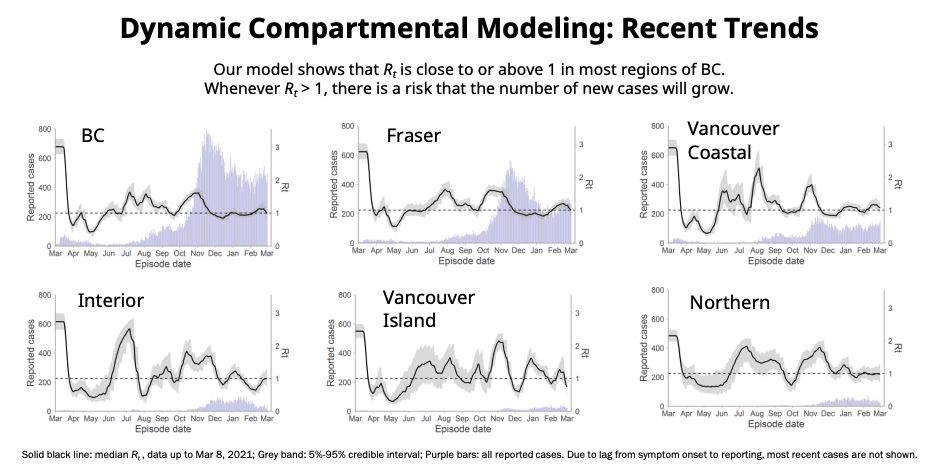COVID-19 modelling shows BC must bend curve further despite easing outdoor restrictions

Health officials in British Columbia shared their most recent epidemiological modelling on Thursday afternoon.
The announcement was given by Provincial Health Officer Dr. Bonnie Henry and Health Minister Adrian Dix. One of the biggest updates was an amendment to the province-wide COVID-19 orders, allowing for outdoor gatherings of up to 10 people.
“This means your children can have a playdate with their friends – their safe group of friends – over the March break,” said Henry. “You can meet friends outside, for a coffee, a chat, a connection, a picnic in the park.”
Despite slightly easing measures, Henry says that BC is “not quite there yet” when it comes to bending the case curve projection back down.
“There has been no part of our province that has been spared from dealing with this virus,” she explained. “The next two weeks are what is going to give us a sense of where we’re going to be, come April.”
One finding from recent data is that BC’s case rate appears to be among the highest across Canada.

Ministry of Health
The majority of cases and concerns continue to be in Fraser Health and Vancouver Coastal Health, although Henry says that Prince Rupert and areas of the Fraser Valley have presented ongoing challenges.
- See also:
Looking over the past year of the COVID-19 pandemic, Henry says that BC’s first wave was “relatively small,” adding that case numbers peaked somewhere in early December. The province was on a “steady downward trajectory” until the middle of February when we saw “a little bit of an upswing.”
While the seven-day rolling average of cases has increased, fortunately, hospitalizations have stabilized and deaths have come down.
Health officials say that there are two main scenarios where BC continues to see transmission: small gatherings, such as social events and birthday parties, and transmission in the workplace, where people can’t actively separate and the risk of spread is higher.
Additionally, BC’s average infectious contact rate is estimated to be between 50% and 60% of normal. Henry says that in order to bend the curve, the infectious rate needs to drop to between 45% and 50%.

Ministry of Health

Ministry of Health
When looking at transmission rates in individual health authorities, Henry says that the Rt has been hovering around one, although “it’s not the same everywhere in the province.”
The Rt estimates the average number of people that would be infected for every new test-positive case of COVID-19.
Transmission rates in Fraser Health and Vancouver Coastal Health are “trending down towards where we want to be.”
There has, however, been a fluctuation in areas such as Vancouver Island and the North, where transmission is “slowly on the increase.”

Ministry of Health

